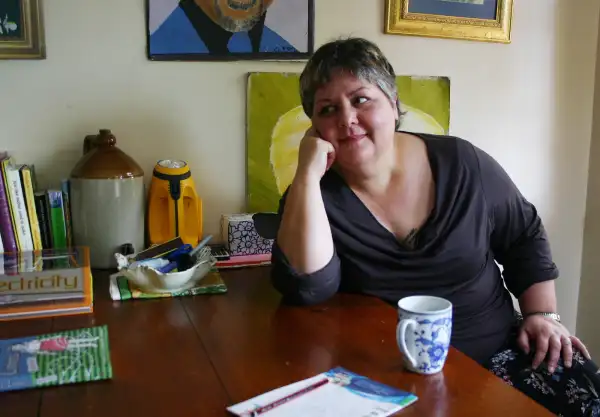Have you ever been so engrossed in a novel that time seemed to run away? That’s the power of a compelling plot. But as a writer, outlining a real page-turner demands effort and focus.
Here’s a brief guide to the essentials of plot and some useful tips for designing an immersive storyline.
BY ANDREW BAIRD
What is a plot?
A plot consists of the key events in a story – what happens in the story – and the way they weave together to form a sequence from beginning to end.
It’s like a series of well-placed lamps in an underground tunnel system, lighting the way for your characters and your reader through the narrative.
What are the key elements of a plot?
There are many plot structures out there: Aristotle’s Story Triangle, Freytag’s Pyramid, The Hero’s Journey, The Fichtean Curve, The Snowflake Method, Save the Cat – the list goes on.
Freytag’s Pyramid is a plot structure commonly used in dramas such as William Shakespeare’s Romeo and Juliet. As an analogy, let’s liken the pyramid’s plot elements to going for a run in the park:
- Exposition. Think of this as lacing up your shoes and deciding on a route. In a story, the exposition sets the stage by introducing the main characters, the setting and the initial situation.
- Inciting incident. You take your first steps and feel your heart rate begin to rise. The inciting incident is the specific event that sets a story in motion.
- Rising action. You begin to find your running groove, enjoying the changing scenery and building up a sweat. Similarly, the rising action in a story involves a series of events that build tension as they unfold, leading up to the climax.
- Climax. Ouch! A rogue stick trips you up, injuring you. A story’s climax is its turning point, the most intense moment where the main conflict reaches its peak.
- Falling action. You hobble towards home, assessing your injury. The falling action deals with the consequences of the climax. It’s where the tension starts to resolve and loose ends begin to come together.
- Resolution. You finally reach home, treat your injury and come to terms with the recovery ahead. This is the final stage in a story, during which any remaining loose ends are tied off, the characters’ journeys are complete and the audience gains a sense of closure.
This is just one example of a plot structure, but different stories will require different structures. The key is to choose a plot structure that lights the way for your story.
Read more:
Elements of a Plot: What Is a Story Plot?
The 5 Elements of Dramatic Structure: Understanding Freytag’s Pyramid
Story Structure: 7 Types All Writers Should Know
Four tips for writing a compelling plot
1. Brainstorm.
Brainstorming is a helpful first step in the creative process.
Einstein said, ‘Imagination is more important than knowledge.’ Brainstorming is about unlocking your imagination. Seek out ideas that are wild and wacky – or bold and fresh, then select one you’re excited about.
Your reader will engage more with an idea you can write passionately about.
Brainstorming: How to Generate Ideas and Improve Your Writing
2. Prepare a plot outline.
The question of whether to outline or not is a subject of much debate in writing circles. In brief, a plot outline summarises the main details and sequence of events in your story.
So, can outlining improve your plot? Some say yes, and here’s why:
- Direction. An outline shapes a clear pathway for your story from beginning to end, helping you maintain a coherent structure.
- Flow. Outlining helps maintain flow by providing a basic plan for what will happen to your characters and ensures logical and emotionally satisfying progression. Your scenes will be more engaging.
- Pace and focus. Outlining helps you identify the core elements that drive your story. This keeps your writing focused and well-paced, minimising the chance of taking your story on a tangent.
- Spontaneity. An outline isn’t set in stone. You’re free to explore new angles and characters, revising the outline along the way to keep your story on track.
Discover more:
How to Use the Snowflake Method to Outline Your Novel
The Top 12 Benefits of Outlining Your Novel
3. Raise the stakes.
Raising the stakes increases tension, deepening your reader’s immersion in the plot. Here are some ways to raise the stakes:
- Create danger and physical challenges.
- Add problems or obstacles that need to be overcome.
- Complicate your character through their backstory.
- Add time constraints for urgency.
These techniques make your character’s plight more dire before it improves. Let’s look at two different angles for the plot idea ‘An adventure through the Amazon jungle’.
Plot One – A group of explorers embarks on an adventure of discovery. Along the way, they get lost, argue with each other, and discover the village of an indigenous community.
Plot Two – A solo explorer embarks on an adventure of self-discovery. Along the way, she has encounters with wild animals, gets injured and loses her way. She struggles mentally with being alone, but eventually meets an indigenous person. She embraces the local community and experiences growth in herself. She gathers strength and leaves the jungle behind.
Plot Two is more likely to captivate your reader. The danger, solitude and struggle add tension and depth to the journey.
Learn more:
Seven Tips for Creating Tension in Your Fiction Writing
How To Write a Compelling Story
4. Include plot twists.
Adding some shifty and twisty elements to your plot can make it more intriguing to your reader. Plot twists add spice to an already great recipe. Here are some tips for adding plot twists:
- Disrupt the expected ending. The art of this twist lies in the build-up. The story builds suspense towards an expected ending but then subverts expectations by ending completely differently. Gillian Flynn’s Gone Girl employs this strategy to great effect (no spoilers!).
- Include a grand reveal. Revealing something big early on can shock your reader and entice them deeper into the story. The murder of Ratchett in Agatha Christie’s novel Murder on the Orient Express is a classic example of a grand reveal.
- Elevate a minor character. One way to surprise your reader is to thrust a minor character into the limelight. Perhaps the taxi driver helping the main character escape is an undercover agent attempting to foil the plan.
Plot is subtle, weaving a path for your character’s journey behind the scenes. In Ray Bradbury’s words,‘Plot is no more than footprints left in the snow after your characters have run by on their way to incredible destinations.’
With these words in mind, be conscious of the importance of plot. Take your time and use the tips in this article to develop a plot that leaves a lasting impression on your reader’s mind.

About the Author

Andrew Baird is a freelance writer living in Wellington and is also a team leader at an engineering consultancy working on projects in the electricity sector. When Andrew isn’t writing or engineering, you’ll most likely find him exploring the outdoors, a new place, or connecting with his friends and family. Andrew is also an advocate for enjoying a balanced life that is kind to others and our one planet.











